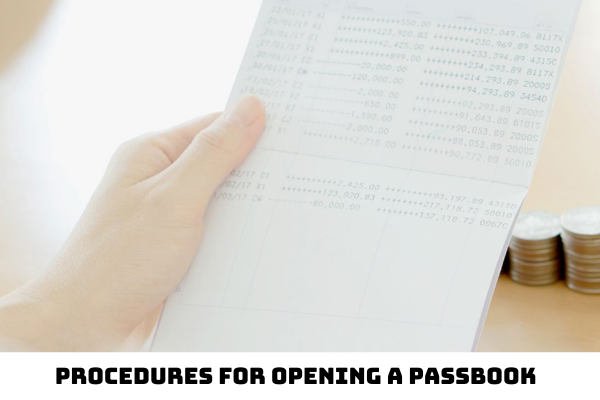Vietnam: What are the procedures for opening a passbook? What are the procedures for paying out saving deposits at transaction offices of credit institutions?
What is a passbook and what are the details of a passbook in Vietnam?
Under the provisions of Article 7 of Circular 48/2018/TT-NHNN, a passbook or bankbook (hereinafter referred to as passbook) is the certificate of ownership of a savings deposit made by the depositor held at a credit institution, applied to the case of taking of savings deposit at the legal transaction office under the operation network of the credit institution.
- Details of the passbook include:
(i) Credit institution’s name and seal; full name and signature of the bank teller and the legal representative of the credit institution;
(ii) Full name, number, and date of issue of identity proof of the depositor or all depositors (in case of a joint savings deposit) and information of the depositor’s legal representative if the savings deposit is made by the legal representative;
(iii) Number of passport; amount; currency; deposit date; maturity date (applied to term savings deposit); deposit term; interest rate; interest payment method;
(iv) Methods offered to depositors to access their savings deposits;
(v) Actions to be taken in a case where a passbook is crumpled, torn or lost;
- Apart from the above details, a passbook may have other information as prescribed by the credit institution.
What are the procedures for opening a passbook in Vietnam?
The procedures for opening a passbook in Vietnam are specified in Article 12 of Circular 48/2018/TT-NHNN as follows:
(1) A depositor must come to a transaction office of a credit institution in person and present his/her identity proof; in case of a joint savings deposit, all depositors must present their identity proof in person. If the savings deposit is going to be made by the legal representative, such legal representative must present his/her representative status proof and identity proof, and identity proof of the depositor.
(2) The depositor has to register his/her sample signature in a case where he/she wishes to change his/her old sample signature or he/she has not had such a sample signature registered at the credit institution. If the depositor is unable to write, read or see: he/she will follow the guidelines of the credit institution.
(3) The credit institution shall compare and update the information of depositors as per the law on anti-money laundering.
(4) The depositor will follow other procedures as guided by the credit institution.
(5) Upon completion of the above procedures, the credit institution shall take the savings deposit and give the passbook to the depositor.
- Adding credit to a savings account of an issued passbook:
+ Adding credit in cash: The depositor shall comply with from (1) to (4) and present the issued passbook. The credit institution shall take the credit to the savings account, record the credit to the issued passbook, and give the passbook to the depositor;
+ Adding credit from a checking account of the depositor: the depositor will follow procedures as guided by the credit institution.
In addition, the procedures for opening a passbook online shall be carried out as follows:
Step 1: Open an account and register for Internet Banking service.
Step 2: Log in to your Internet Banking account on the app or website.
Step 3: Select the passbook section, and enter the amount you want to make saving deposits and the deposit term.
Step 4: Enter the code and confirm
Step 5: The system sends an OTP code to your phone, enter this code and you're done.

What are the procedures for paying out saving deposits at transaction offices of credit institutions in Vietnam?
The procedures for paying out saving deposits at transaction offices of credit institutions in Vietnam comply with the provisions of Article 18 of Circular 48/2018/TT-NHNN as follows:
(1) The credit institution requests the depositor to follow the following procedures:
- Present the passbook;
- Present the identity proof of the depositor; or of all depositors (applied to joint savings deposit). If the savings deposit is going to be paid out by the legal representative, such legal representative must present his/her representative status proof and identity proof and identity proof of depositor;
- Submit a savings deposit withdrawal form bearing the signature the same as the sample signature held at the credit institution. If the depositor is unable to write, read or see: he/she will follow the guidelines of the credit institution.
(2) The credit institution shall compare the information of the depositor, the depositor’s legal representative in a case where the savings deposit is paid out through the legal representative, information in the passbook, and signature in the withdrawal form with the information held at the credit institution.
(3) After the credit institution and the depositor complete the above procedures, the credit institution shall pay out the depositor the principal and interest of the savings deposit in full.
(4) The credit institution shall provide guidelines for the following payout procedures by this Circular and relevant law provisions, ensuring that the savings deposit payout is made accurately and safely as to the depositor and the operation of the credit institution:
- Savings deposit payout under inheritance;
- Savings deposit payout under the authorization of the depositor.
LawNet